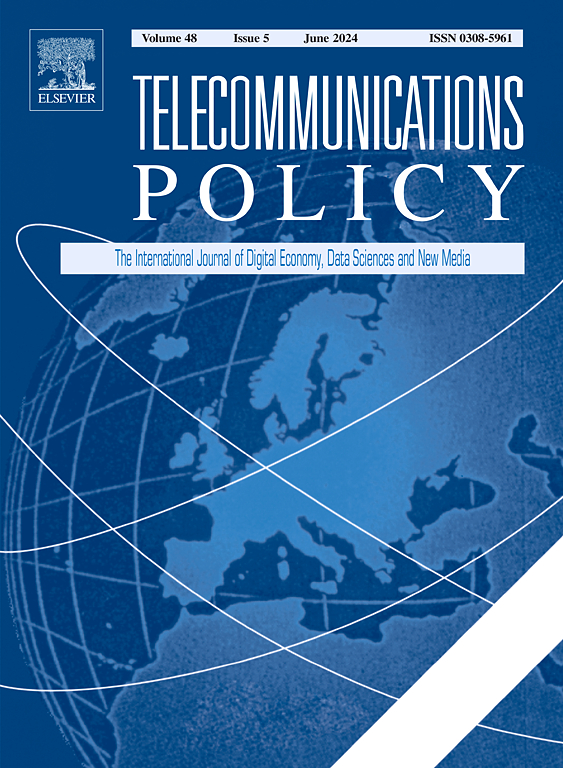Two paths of balancing technology and ethics: A comparative study on AI governance in China and Germany
IF 6.4
2区 管理学
Q1 COMMUNICATION
引用次数: 0
Abstract
Artificial intelligence is rapidly becoming a transformative technology on the agenda of global competition. Although it provides groundbreaking opportunities to benefit societies, the technology also evokes tremendous concerns about potential risk and harm. Mitigating such risks and turning technology into a responsible asset for humanity have been essential agendas in the emerging global architecture of AI governance. Thus, this study proposes an integrated CAMS framework of AI governance to examine the content, actors, means, and scope of AI technology regulations in China and Germany. Regarding AI governance as an active negotiation and regulatory trajectory, we investigate laws and policies on AI governance and the policy-making processes in both countries and articulate two paths of balancing technology and ethics. China adopts a utility-oriented approach featuring a state-led governance structure with complex central-local dynamics. In the Chinese model, AI technology is a driver of economic development, and ethics serves as a utilitarian tool to safeguard the advancement of technology. Germany constructs a right-based approach governed by multisectoral discussion and cooperation platforms with state supervision. In the German model, AI technology is a high-risk arena, and ethics represents the rights for which technological development should serve. This comparative study offers nuance to further understand the dynamic transformation of emerging AI governance.
平衡技术与伦理的两条路径:中德人工智能治理比较研究
人工智能正迅速成为全球竞争议程上的一项变革性技术。虽然它为造福社会提供了开创性的机遇,但该技术也引发了对潜在风险和危害的巨大担忧。在新兴的全球人工智能治理架构中,降低此类风险并将技术转化为对人类负责任的资产一直是必不可少的议程。因此,本研究提出了人工智能治理的综合 CAMS 框架,以考察中国和德国人工智能技术法规的内容、参与者、手段和范围。将人工智能治理视为一种积极的协商和监管轨迹,我们调查了两国有关人工智能治理的法律和政策以及政策制定过程,并阐明了平衡技术与伦理的两条路径。中国采用的是以实用性为导向的方法,其特点是以国家为主导的治理结构,具有复杂的中央-地方动态关系。在中国模式中,人工智能技术是经济发展的驱动力,而伦理则是保障技术进步的功利工具。德国构建了一种以权利为基础的方法,由多部门讨论和合作平台管理,并由国家进行监督。在德国的模式中,人工智能技术是一个高风险的领域,而伦理则代表着技术发展所应服务的权利。这项比较研究为进一步理解新兴人工智能治理的动态转型提供了细微的帮助。
本文章由计算机程序翻译,如有差异,请以英文原文为准。
求助全文
约1分钟内获得全文
求助全文
来源期刊

Telecommunications Policy
工程技术-电信学
CiteScore
10.80
自引率
12.50%
发文量
122
审稿时长
38 days
期刊介绍:
Telecommunications Policy is concerned with the impact of digitalization in the economy and society. The journal is multidisciplinary, encompassing conceptual, theoretical and empirical studies, quantitative as well as qualitative. The scope includes policy, regulation, and governance; big data, artificial intelligence and data science; new and traditional sectors encompassing new media and the platform economy; management, entrepreneurship, innovation and use. Contributions may explore these topics at national, regional and international levels, including issues confronting both developed and developing countries. The papers accepted by the journal meet high standards of analytical rigor and policy relevance.
 求助内容:
求助内容: 应助结果提醒方式:
应助结果提醒方式:


